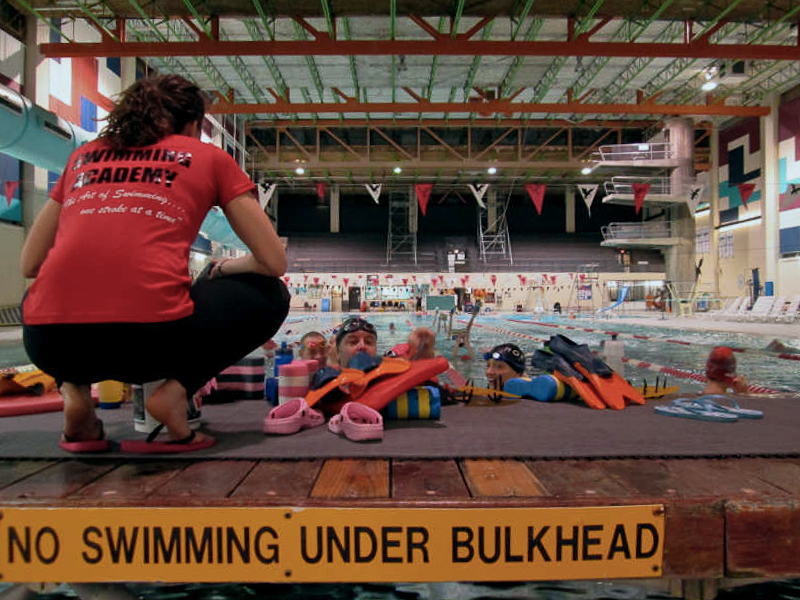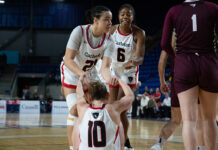A trio of speedo-clad Ravens joined Carleton’s varsity roster in 2013, after the team rebooted in September following a year without registration.
The university stripped the swim team of its varsity status in 2007, barring its athletes from competing at inter-university competitions, like the Ontario University Athletics (OUA) championships, according to Claudia Cronin-Schlote, who used to work as the team’s assistant coach.
“It was a very popular team to belong to,” she said.
Cronin-Schlote said the team boasted more than 30 athletes one decade ago, but faded after the university restructured its financial plan for varsity sports.
Jennifer Brenning, Carleton’s athletics director, said swimming used to be a varsity team, but had to be made into a different category after a series of struggling results.
“Right now, [swimming] isn’t really in a specific level,” she said. “It isn’t necessarily a varsity team like some of our others because we can’t give them as much money, but we do provide them with full funding for all OUA events if they make it.”
But Brenning said the team is now receiving more attention on campus because of its three swimmers who made provincials in the 2013-14 campaign—two first-year male recruits and a female para-athlete.
When it comes to funding the team, current coach Sarah Boyd said they need more support from the university if they hope to build the school’s swimming program.
She said although the university provides some funding to cover competition costs, she said the money is only adequate because the team is so small.
She said the team will need more funding if it grows, as Boyd hopes, into double the number of swimmers in 2014-15.
“I want anyone and everyone,” she said. “We need to build a roster and build a team.”
Cronin-Schlote said some of the team’s struggles are because swimming, unlike football and basketball, simply does not draw a crowd.
To compensate for the lack of funding, Brenning said the team fused with ROC Swimming—a competitive swimming club and facility on campus.
In addition, Boyd said the team initially had to raise its membership costs.
In the 2011-12 year, she said swimmers paid $2,100 to join the Ravens for that season, but this did not include the additional costs of swim meets or team apparel.
But she said fees have since decreased and swimmers now pay $1,500—which she said is still approximately three times the cost of joining the average varsity swim team.
Boyd described the past year as an introduction to varsity swimming for new recruits, but said she hopes to field a competitive and popular Ravens team— like in the past—within five years at the university.
Cronin-Schlote said she is equally optimistic for an increase in swimmers, but she admitted it is difficult to attract new athletes when membership fees are still so high.
“They all did well in the end. Did they score points? No. But neither did the football team,” she said. “The football team is starting from nothing and that’s exactly where we are—except we don’t have millions of dollars supporting us.”






